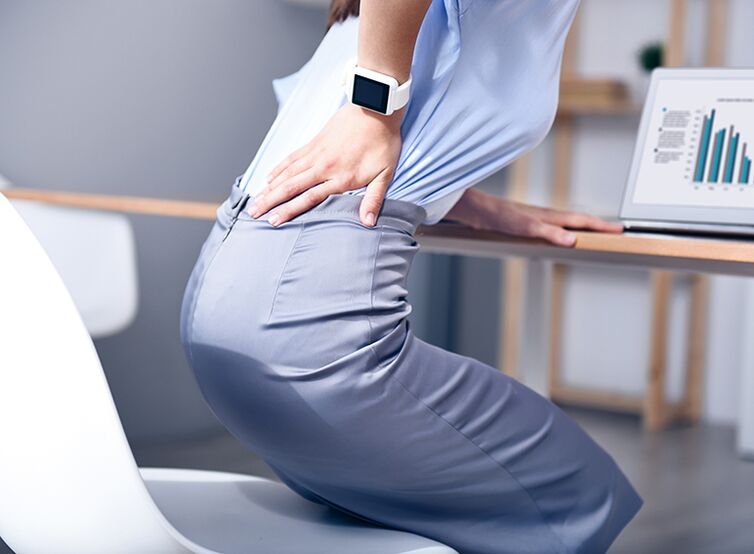First, the doctor observes that, in the norm, there should be no low back pain:

If the pain syndrome rarely occurs - for example, after lifting weights, exercising or an uncomfortable position - then this is a variant of the norm. But if pain appears regularly—every time after sitting in an uncomfortable chair—that's a reason to be careful and look for the cause.
With pain, which occurs once every six months or a year only after traumatic factors, you cannot rush to the doctor. But if the pain syndrome becomes chronic or progresses to a stronger stage and then returns to the lung, this is already a reason to contact a specialist. The neurologist adds:
In addition, the reason for making an appointment with a specialist may be a single, but sharp and unreasonable pain, as well as a marked increase in the painful syndrome. Especially if the pain radiates to the leg or other parts of the body. This can be accompanied by other unpleasant sensations: loss of sensation, "shivering" in the skin, a burning sensation. In such cases, you should go to the doctor.
Why can the lower back hurt?
According to the doctor, a common cause is myofascial pain syndrome, that is, pain associated with abnormal muscle tension in the lower back.
Pathological muscle syndrome occurs precisely because we are sitting uncomfortably, carrying ourselves physically, lifting weights, - says the doctor. As a result, the muscles spasm. But more often there is compression of the root in the spine - this is a different, neuronal nature of pain.
The neurologist explains that the roots come out of the spinal cord and extend to different parts of the body, including the lower back. And when there is pressure on these nerves, pain can begin to be felt in various parts of the body: in the thighs and coccyx, sacrum and even in the abdomen.
The third option is internal organ pathology. They can be problems with the kidneys, intestines and the urological or gynecological part. In this case, back pain acts as a sign of the presence of other illnesses.
We also add that the pain itself is of two types: nociceptive (ie, inflammatory) and neuropathic.
The first is associated with inflammation of muscle fibers - it manifests in myofascial pain syndrome and is associated with a traumatic factor. This pain is usually dull, pulling with rising local temperature when the lower back is warm to the touch.
Neuropathic pain manifests itself differently: it is a burning sensation, chills, numbness, cold, a drop in sensitivity. Even a small injection in the lower back can make the pain worse. If you experience these symptoms, see a neurologist urgently. And, in general, the answer to the question of which doctor to go to for back pain is unequivocal: a neurologist.
Can pain be treated at home?
Some people think that the problem of lower back pain will be solved by replacing the chair. The neurologist is sure: it is always easier to see the doctor.
Of course, you can swap your chairs for more comfortable ones, one by one. But that may not be the issue. Although you should have a comfortable office chair in which to work anyway, it would be good to get up every couple of hours and do some light physical activity: lean over, bend over to change the position of your lower back.
A pillow or roll placed under the back works according to a similar principle:
We sat down as usual, then placed a pillow. We stayed in this position for a while - they removed it again - warns the neurologist. - This lumbar support is also helpful. You can change the tilt angle of the monitor, including moving it slightly to the right, slightly to the left. Thus, the load changes - both in the lower back, as in the thoracic region and neck.
If you need to relieve the condition now, the doctor points out that only dry heat should be used to treat pain in the lower back:
In this situation, under no circumstances should you take a hot shower. But the electric and salt-warming pillows (in the form of bags that grandmothers used to make) help a lot. Several applicators will also work. These are mats with needles: if you lie down on them, the muscle tone will disappear.
For this, the doctor advises connecting a short course of nonsteroidal anti-inflammatory drugs and using a local anti-inflammatory ointment:
If you've done all that and the pain has gone away in 3-4 days, that's okay, you might say. If the pain doesn't subside, there are no more options: you definitely need to see your doctor.























